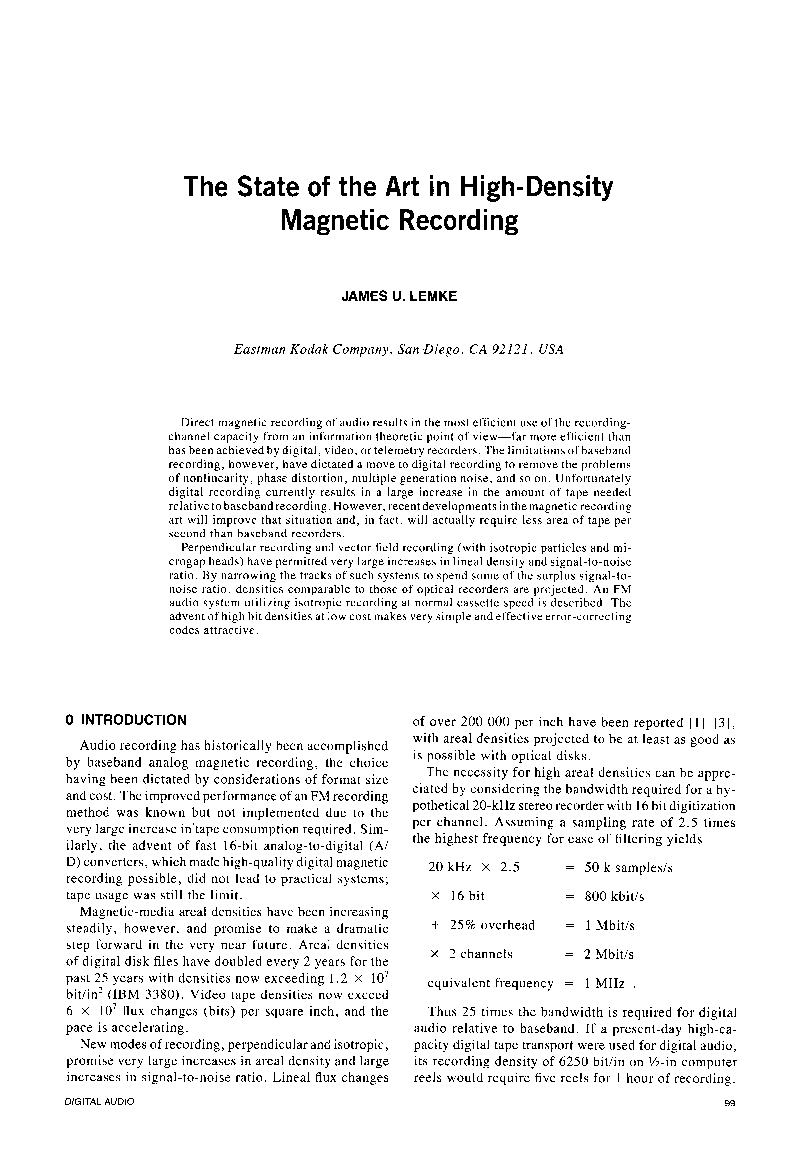Home / Publications / E-library page
You are currently logged in as an
Institutional Subscriber.
If you would like to logout,
please click on the button below.
Home / Publications / E-library page
Only AES members and Institutional Journal Subscribers can download
Direct magnetic recording of audio results in the most efficient use of the recording-channel capacity from an information theoretic point of view - far more efficient than has been achieved by digital, video, or telemetry recorders. The limitations of baseband recording, however, have dictated a move to digital recording to remove the problems of nonlinearity, phase distortion, multiple generation noise, and so on. Unfortunately digital recording currently results in a large increase in the amount of tape needed relative to baseband recording. However, recent developments in the magnetic recording art will improve that situation and, in fact, will actually require less area of tape per second than baseband recorders.: Perpendicular recording and vector field recording (with isotropic particles and microgap heads) have permitted very large increases in lineal density and signal-to-noise ratio. By narrowing the tracks of such systems to spend some of the surplus signal-to-noise ratio, densities comparable to those of optical recorders are projected. An FM audio system utilizing isotropic recording at normal cassette speed is described. The advent of high bit densities at low cost makes very simple and effective error-correcting codes attractive.
Author (s): Lemke, James U.
Affiliation:
Eastman Kodak Company, San Diego, CA
(See document for exact affiliation information.)
Publication Date:
1982-06-06
Import into BibTeX
Session subject:
Digital Audio
Permalink: https://aes2.org/publications/elibrary-page/?id=3411
(554KB)
Click to purchase paper as a non-member or login as an AES member. If your company or school subscribes to the E-Library then switch to the institutional version. If you are not an AES member Join the AES. If you need to check your member status, login to the Member Portal.

Lemke, James U.; 1982; The State of the Art in High-Density Magnetic Recording [PDF]; Eastman Kodak Company, San Diego, CA; Paper Rye-011; Available from: https://aes2.org/publications/elibrary-page/?id=3411
Lemke, James U.; The State of the Art in High-Density Magnetic Recording [PDF]; Eastman Kodak Company, San Diego, CA; Paper Rye-011; 1982 Available: https://aes2.org/publications/elibrary-page/?id=3411